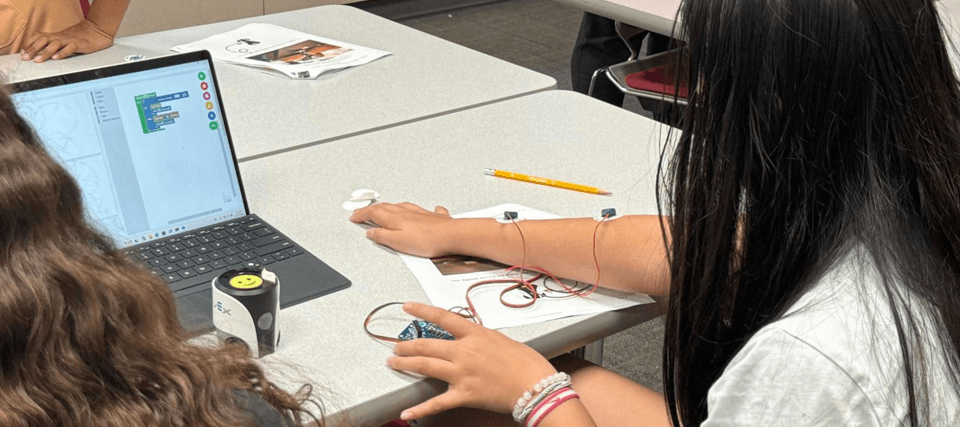VEX AIM at Work: Engaging Learners and Innovators Around the World
Learning comes alive when students can see, touch, and experiment with the ideas they are exploring. This is the purpose of VEX AIM. By combining robotics, coding, and real-world problem solving, AIM invites learners to tinker, explore, and create in ways that spark curiosity and confidence.
Across classrooms, research labs, and global events, AIM is helping educators, researchers, and innovators connect abstract concepts to concrete experiences. Students can practice coding and computational thinking, researchers can explore novel approaches to STEM engagement, and event organizers can capture the energy of hands-on discovery. People experience technology with VEX AIM, whether their goal is playing, learning, or exploration.
This summer, that vision came to life on a global stage. At Google Summit 2025 in London, VEX AIM powered an activity that transformed AI from a concept into a competition: AI RoboBall. Google was looking for a dynamic way to showcase Gemini’s Code Assist, and they turned to AIM to make it happen.

The Challenge: AI RoboBall
In collaboration with ROI Training, VEX created a high-energy game of robotic soccer. Participants “vibe coded” AIM robots to track, chase, and score with the ball, turning AI-assisted coding into a lively competition.
The field setup included:
- Two VEX 123 fields combined and painted green to resemble a soccer pitch
- Subbuteo goalposts for a classic soccer feel
- Blue and orange barrels inside each goal for AIM’s object recognition to detect a goal
A top-down camera and live score-tracking app to engage the audience in real time.

Coding
With AI Assistance. Participants began with a basic Python project that allowed AIM to search for the ball, retrieve it, and score. With the Gemini Code Assist Extension in Visual Studio Code, they enhanced and personalized their code using natural language prompts.
Example prompt
“Modify the code to look for the ball by turning at 40% velocity, and once found, move toward it at 80% velocity.”
Gemini used the VEXcode API reference site as context to generate valid Python code, which participants immediately tested and refined before the matches began.
A major attraction at the Summit, AI RoboBall became one of the most popular experiences at the event. Over 600 attendees visited the booth, and over 200 actively participated. Both Google and ROI Training praised AIM for its developer experience, reliability, and the excitement it generated.
Google has already announced two next steps:
- AI RoboBall will become a permanent feature of the London AI Playground.
- It is under consideration for Google’s traveling “on the road” experiences, bringing AI-powered engagement to audiences worldwide!

Expanding the Reach of AIM in STEM
The excitement surrounding AIM extends beyond conferences. I recently visited Dr. Feiya Luo and Dr. Chris Crawford at the University of Alabama, where their summer camp combines VEX AIM with biofeedback and neural data to increase engagement in computer science and STEM. Their research shows how linking robotics to students’ physiological responses can make coding more personal, immersive, and inspiring.
The way students were learning conditionals by clenching their fists amazed me. If you clenched your fist hard, the robot would turn. If you clenched your fist lightly, the robot would move forward. Of course, the student engagement was off the charts.

VEX AIM demonstrates how to make computer science more engaging and inclusive by bringing it off the screen. It connects coding, creativity, and real-world innovation in a way that excites learners, captivates audiences, and inspires the next generation of STEM leaders.
